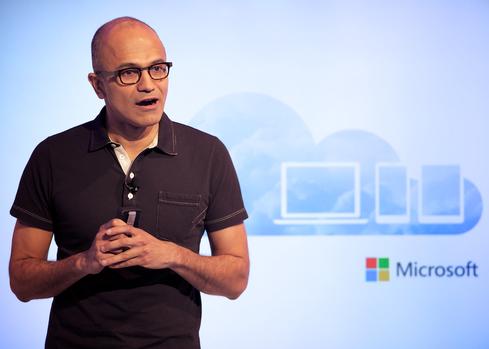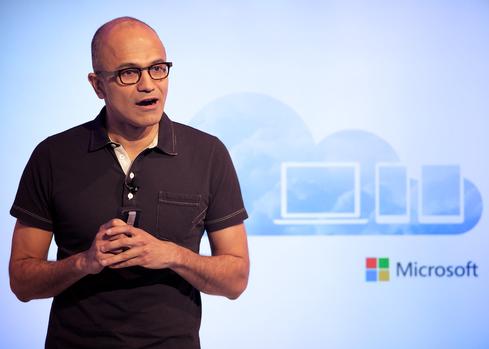Microsoft's new tools aim to serve all users -- not just data scientists -- extracting insight from big data sets and the Internet of Things.


16 Top Big Data Analytics Platforms
16 Top Big Data Analytics Platforms (Click image for larger view and slideshow.)
Microsoft on Tuesday announced a trio of products to help customers derive insights from their exploding stores of data. Pointing out that data is the business currency of the future, company execs claimed that the new products could help customers capture more than $1 trillion in new revenue and improved efficiency over the next four years.
Unveiled at a media and partner event in San Francisco, the new products include SQL Server 2014, which was released to manufacturing last month and promises faster performance thanks to in-memory processing for all workloads. Microsoft also announced its Analytics Platform System (APS), which it described as a "big data in a box" appliance that unifies SQL Server and Hadoop. The company rounded out the announcements with Azure Intelligent Systems Service, a cloud-based service to collect and manage data from the Internet of Things (IoT).
The new products help clarify Microsoft's data strategy. In his first few appearances as CEO, Satya Nadella tied his "cloud-first, mobile-first" strategy to a burgeoning era of "ubiquitous computing" and "ambient intelligence." Until this week, however, he hadn't explained specifically what this means for the company's products and customers.
[Is Windows 8 finally on the right track? Read Windows 8.1 Update: 5 Essential Facts.]
SQL Server 2014's in-memory capabilities help it crunch through workloads up to 30 times faster than in previous versions, Microsoft execs said. COO Kevin Turner said Nasdaq, a pre-release adopter of the new product, used SQL Server 2014 to reduce some query times from days to minutes. Nasdaq's massive database includes more than a quintillion rows of information, according to Turner.
In a demonstration, Microsoft also illustrated how in-memory technologies can improve web performance. Retail sites increasingly rely on personalized user recommendations and other dynamic attributes. The customer experience takes a hit, however, if these processes take too long. Microsoft claims SQL Server 2014's superior speed can solve this problem.
Figure 1:  Microsoft CEO Satya Nadella
Microsoft CEO Satya Nadella
APS will combine hardware built by Microsoft partners such as Dell and HP with SQL Server and Hadoop. The pairing allows customers to run real-time queries that were previously difficult to achieve, such as correlations between a product's sales and social media reputation within a given timeframe or geography.
Microsoft announced Azure Intelligent Systems Service as a limited public preview. Nadella described an emerging world in which sensors can be embedded in everything, enabling an explosion of new interactions between, not only machines and humans, but also machines and other machines. Because all these interactions can be digitized, Nadella said, companies can accrue data, discern insights, and adjust strategies faster than ever.
Microsoft execs emphasized that Azure Intelligent Systems Service is built to manage IoT devices of all stripes, not just those that will run embedded Windows platforms,
such as the upcoming IoT-flavored version recently teased at Build. The company has already begun using the technology to more efficiently manage its home campus in Redmond, Wash.
Microsoft officials also showed off Office 365's Power BI data analytics tools and their new place in the company's data strategy. Following the announcements, SQL Server and Azure constitute the back end of Microsoft's data platform while Office constitutes the front end -- or the "UI for data," as Nadella called it.
In a series of demonstrations, Microsoft execs used Excel and Power BI to quickly visualize data, turning abstract rows of numbers into interactive graphs, charts, and maps. A spreadsheet summarizing power consumption across a corporate campus could be translated into a map in which energy spikes are color-coded or otherwise made easier to detect, for example. The gist is that users needn't be data scientists to derive insights; Microsoft believes its tools, which include natural language queries, will allow everyone to live within a data-driven culture.
That culture will be big business, according to a Microsoft-backed IDC study. The research firm said organizations that embrace a holistic approach to data could enjoy approximately $1.6 trillion in new revenue, lower costs, and improved productivity over the next four years. Nadella pointed out that Microsoft already generates substantial cash from its data businesses. He said SQL Server generates more than $5 billion in annual revenue and characterized Excel as the most ubiquitous data analytics product in the world.
Emerging standards for hybrid clouds and converged datacenters promise to break vendors' proprietary hold. Also in the Lose The Lock-In issue of InformationWeek: The future datacenter will come in a neat package (free registration required).
About the Author(s)
You May Also Like







